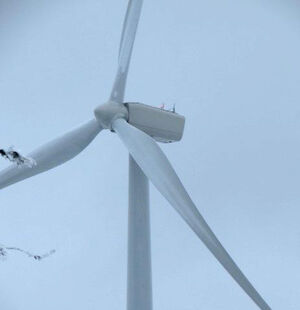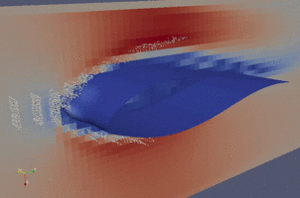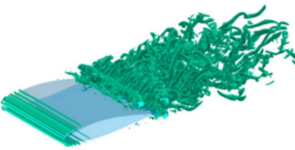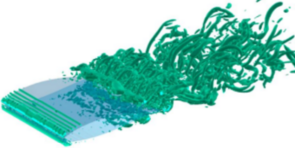Wind Turbines in Cold Climate: Fluid Mechanics, Ice Accretion and Terrain Effects
Background

With the increasing number of installed wind turbines, there are less and less available areas for the installation of new turbines. As a consequence, new turbines are often built in cold climate areas (Nordic regions or high altitudes). Even if the available wind resources in such areas are often superior to the ones available at warmer climate, icing is a severe issue having several negative effects.
Beside the changes in the aerodynamic shape of the blade (directly influencing the blade performance), the extra added mass causing vibrations of the structure, and ice throw, changes in the radiated noise is an issue which gathers more and more focus. Even wind turbines with clean airfoils may emit noise levels which cause annoyance for people living in nearby residential or recreational areas. In the presence of ice accretion the radiated noise pattern is changed. An improved understanding of these changes is important to avoid the radiated noise levels exceeding the prescribed limits. Furthermore, such knowledge has the potential to be included in ice detection algorithms.
Project goals
- Increased knowledge on the effects of ice accretion on noise generation
- Developing numerical tools and models for better prediction of noise generation and propagation
- Determine wheater acoustic measurements can be used to detect the degree of icing
Methods

A hybrid approach is used to determine the radiated noise. The flow variables are decomposed in a semi-compressible (the density is depending on the temperature only, but not the pressure) part and an acoustic part. Consequently, there is a flow solver resolving the semi-compressible Navier-Stokes equations and an acoustic solver solving an inhomogeneous wave equation for the perturbation density.
The flow solver handles the turbulence using Large Eddy Simulations (LES). Finite differences on a cartesian grid are applied for discretization. Solid objects are accounted for by the Immersed Boundary Method (IBM). The code is parallelised using the Message Passing Interface (MPI) library to improve efficiency.
Since the liquid water content (LWC) and the median volume diameter (MVD) of the droplets are typically small in icing conditions Lagrangian Particle Tracking (LPT) is used to track droplet parcels having a predefined distribution of droplet sizes.
Ice accretion is modeled by assuming that all droplets hitting the surface freeze instantaneously. Such assumptions are valid for rime ice conditions, for glaze ice conditions more advanced models need to be implemented.
Sample results
Figures 1 and 2 show vortex structures behind a clean airfoil and an airfoil with ice accretion. For the case with ice accretion one can observe perturbations already in the leading edge region. Further downstream, small vortices, generated by the corrugated shape of the accreted ice layer, are seen on the pressure side of the airfoil. At the trailing edge region very long structures are seen on the suction side of the clean airfoil. Analogous structures are seen in the case with ice accretion as well, however, these structures are more wrinkled than in the case of the clean airfoil, due to upstream disturbances. Figures 3 and 4 show the intensity of the noise propagated from the clean airfoil and the airfoil with ice accretion. The effects of ice accretion are clearly visible.




Financing
The project is fiinanced by the Swedish Energy Agency (STEM).
